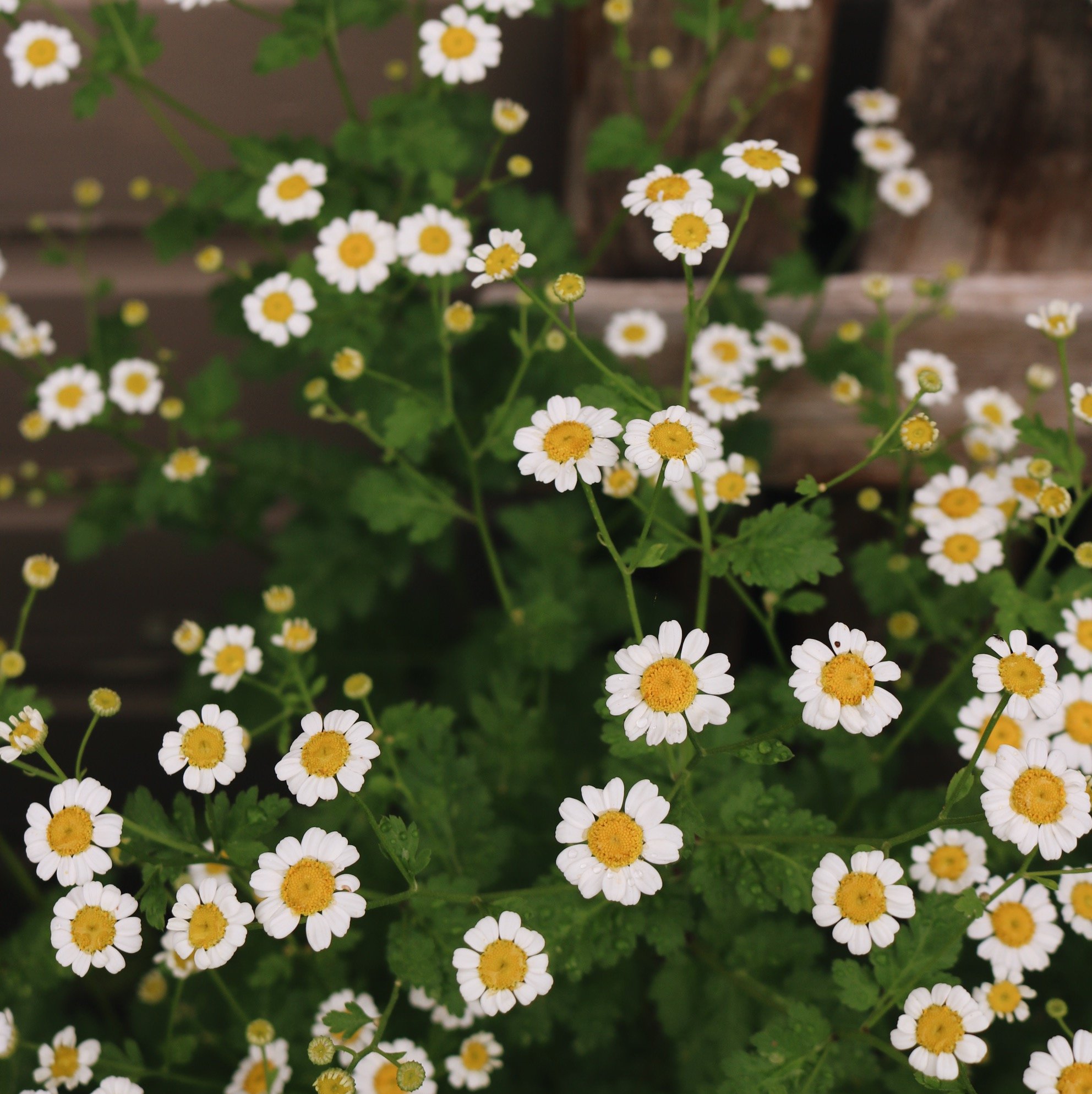It's Time To Plant Feverfew
It's time to plant Feverfew! Feverfew (Tanacetum parthenium) is that small daisy-like flower you so often see in my photos and videos. In our gardens we love planting vegetables for food, herbs for medicine, and flowers for beauty. Feverfew covers 2 of those areas as it can be grown as a cut flower, for medicinal use, or both. Here’s why I love it so much!
Not the same as chamomile
Feverfew has become quite famous these past few years ever since Trader Joe’s began to offer it as a cut flower. There’s only one problem: they label it as chamomile! I have seen influencers and food bloggers alike use feverfew to make chamomile recipes. Proper herb identification when using internally is important for this very reason. Thankfully, feverfew is not toxic, but it’s definitely not going to offer that chamomile flavor. (Plus you should never eat store-bought flowers, they are laden with pesticides). Feverfew and chamomile are not the same and feature many differences in appearance, flavor, and benefits.
Chamomile is shorter and wispier, looking similar to dill, while Feverfew leaves resemble parsley. Chamomile flowers have a raised center and gaps between the petals, while Feverfew has a flatter center and overlapping petals. The benefits of Chamomile are found in the flowers, while the benefits of Feverfew are found in the leaves. Feverfew grows much bigger and bushier, reaching 12"–24" tall and wide their first year, and sometimes even larger as they return the next.
Chamomile
Feverfew
uses and benefits
Medicinally, feverfew is most commonly known for its aid in fevers and migraine relief and prevention. Feverfew is also known to inhibit cancer cells, relieve pain such as stomachaches and toothaches, and so much more. Learn more about the medicinal benefits of feverfew by clicking here!
Feverfew also offers medicine for the soul with its delicate beauty. The flowers last a long time on the plant before fading, and they also stay fresh for over a week in vases as a cut flower. Feverfew is very prolific and adds a lot of cheer to the garden and home!
How to grow
Feverfew is a short-lived perennial in USDA zones 5-8 meaning each plant will come back for about 2-3 years. First-year feverfew will bloom mid-summer through fall, while the plants on their second or third year will bloom early summer. It has a distinct smell that keeps the deer and most other animals from nibbling so it works well in all sorts of landscaping.
Feverfew grows easily from seed which can be scattered in early spring 4-6 weeks before your average last frost date, or in late autumn for blooms the next year. Choose a growing location with full sun and sprinkle the seeds on the surface of the soil. Light aids in feverfew germination, so there’s no need to cover the seeds, simply press them in lightly so they don’t blow away. Keep the soil watered and you will see seedlings emerge in 10-15 days.
Once you have feverfew in your garden, you’ll never again be without. Not only are these flowers perennials, but they self-seed like it’s their full time job, so you’ll have volunteer plants all over the place. Some say feverfew is invasive, but any plant left to seed runs the risk of coming up all over the garden and requires thinning and weeding.
I’ve begun to offer our feverfew seeds in the shop each spring for those who want to join me in feverfew farming! I hope these wonderful plants bring as much joy and beauty to your yards as they do mine. Happy planting!
Feverfew Homestead Seeds
In late summer when our feverfew plants are spent, I cut them back and take the time to harvest all the tiny seeds. I spread them out to dry for 1-2 weeks and then package them up for spring planting.
These seeds are saved from our homestead gardens that are grown and maintained without the use of pesticides, herbicides, or chemical fertilizers. This batch was saved from the 2022 growing season and packaged for the 2023 growing season. Harvested by hand, air dried, and packed with love. Enjoy!
More posts like this one…
This post is not medical advice and is not a substitute for consulting with your doctor. Always do your own research and talk to your medical health professional before introducing any new herbs into your daily routine. Be aware of any allergies you may have and herbal interactions with medications you take. Nothing in this post has been evaluated by the FDA and is not intended to cure, treat, diagnose, or prevent any disease.

















